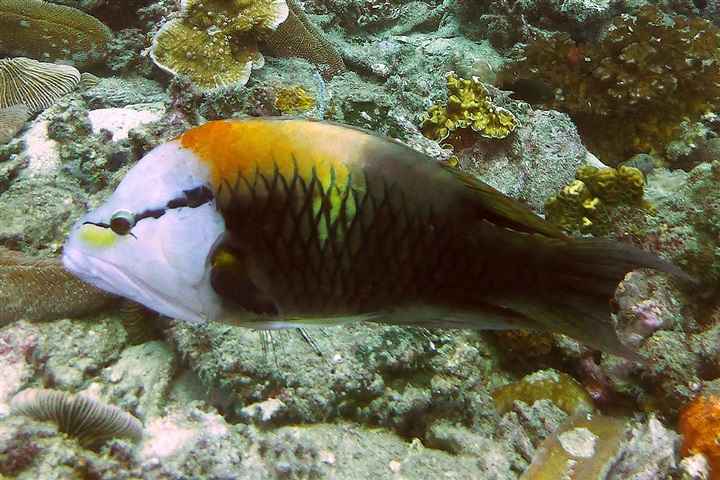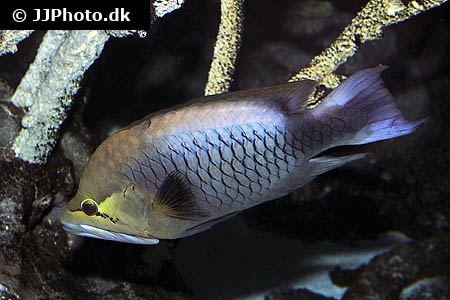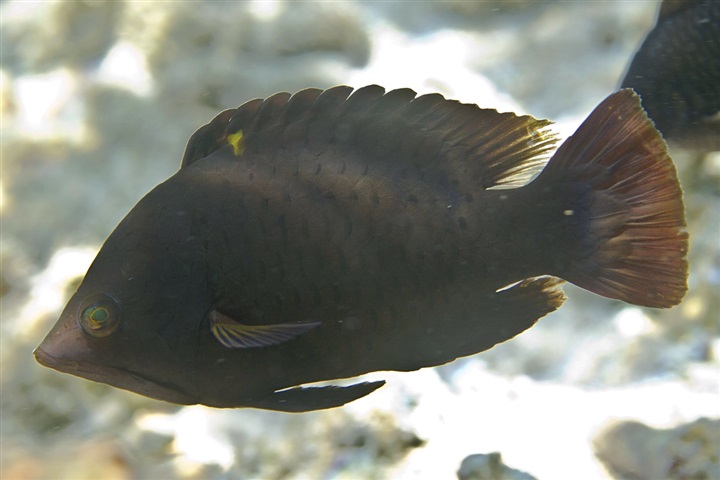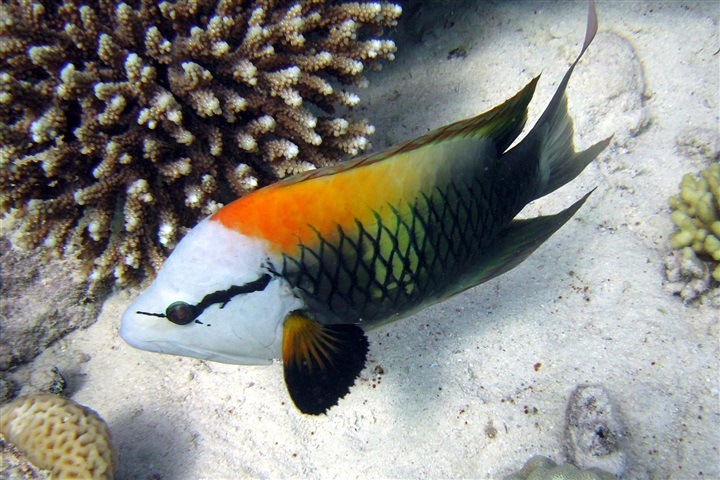Epibulus insidiator






| Latin name | Epibulus insidiator - (Pallas, 1770) |
|---|---|
| Local name | Sling-jaw wrasse |
| Family | Labridae - Epibulus |
| Origin | East Indian Ocean, West Indian Ocean, Australia, The Red Sea, Indonesia, East Pacific, Central/West Pacific |
| Max length | 54 cm (21.3") |
| Minimum volume |
1500 l (396 gal) |
|---|---|
| Hardiness |
Average |
| Suitable for aquarium |
Suitable with care |
| Reef safe |
Reef safe with caution |
| Aggressiveness | Docile but might be aggressive towards similar species |
| Recommended |
Fish Larger crustaceans (Shrimp, crabs...) Other invertebrates Small crustaceans (Krill, mysis, artemia...) |
|---|
This species is known to jump out of open aquaria.
This spicies might be a threat to smaller fishes.
This species poses a threat towards shrimps and crabs etc., which are relatively small.
This species needs a very large aquarium when fully grown.
Exactly how big the aquarium should be is hard to say, but the size of this species is such, that it cannot normally be kept in a home aquarium.
There is a greater chance of success with this species if one can supply a living feed to allow it to adapt to the tank.
This species will better acclimatize to the aquarium`s condition if introduced, when young.
Very small individuals can be very delicate.
This species often has a fun and interesting personality.
This species needs good hiding places, for example, between live rocks.
This species revels in swimming and requires an aquarium with ample space.
This species is very shy and docile, so one should be careful when keeping it with more aggressive fish.
This species can change gender from female to male.
When a male is needed, a female changes sex and takes on the role.
This species can be very shy when first introduced into a new aquarium.
More aggressive fish can be introduced after this species has acclimatized.
Colour can vary from brown to yellow. In captivity the fish will often be brown.
There are two species in the genus Epibulus (Slingjaw Wrasse) which get their name by the way they swing out their jaws to make a tube to catch their prey. This tube makes up about half their length.
These Wrasses live mainly of shrimp, crabs, fish and worms and this must be taken into account. They are most likely to eat living food, have therefore some live shrimps or fish ready if at first they refuse to eat frozen foods. Over time they can be made to eat various kinds of seafood.
Wrasses are nearly always seen in reef aquaria, since many of the species are both attractive and useful in battling a range of unwanted invertebrates like i.e. flatworms, pyramide snails.
These fish live of everything from zooplankton to large crustaceans, sea urchins and the like.
The needs and behaviour of Wrasses vary greatly, so it is vital to familiarize oneself with the specific species before buying one.
| Aquarium trade | Yes |
|---|---|
| Distribution | Indo-Pacific: Red Sea to South Africa (Ref. 35918) and the Hawaiian and Tuamoto islands, north to southern Japan, south to New Caledonia. |
| English common names |
Slingjaw wrasse Telescopefish |
| Danish common names |
Rørmundet gylte |
| German common names |
Trompetenlippfisch |
| French common names |
Labre traître Épibule trompeur Canard |
Scott Michael. 2004. Aquarium Fish: The Slingjaw Wrasse (Epibulus insidiator) - The Fastest Jaw In The West (Pacific)! - Advanced Aquarist - (English)
Scott W. Michael. 2009. Wrasses and Parrotfishes (Reef Fishes Series Book 5) - TFH Publications / Microcosm Ltd. - (English)

